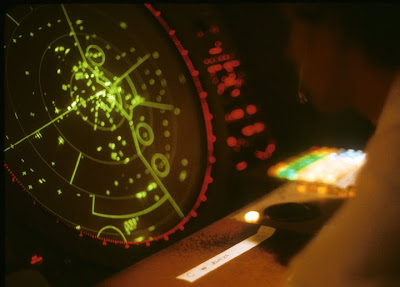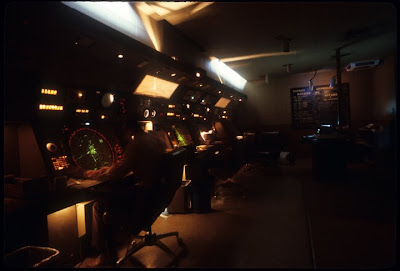US Airways Flight 1549 had a mishap Jan. 15, 2009, shortly after take off from New York’s LaGuardia airport. At an altitude of about 2,800 feet, the airplane encountered a flock of birds. The Airbus 320 ingested birds through both CFM56-5B4/P turbo fan engines.
First Officer Jeffrey B. Skiles, on his first A 320 flight assignment after training, was at the controls when the birds were hit.
“I’ve got the aircraft,” Captain Chesley Burnett "Sully" Sullenberger III was recorded saying, as he took over control of the aircraft while the engines lost all thrust.
The Internet is a wonderful communications device. Every once in a while, someone will make an observation that must have made sense in their head when their fingers stroked their thoughts to the world.
I read a comment that went something like this, “Man has been flying for a hundred years. You’d think they would have found a way to avoid hitting birds.”
Aviation is a high tech world. There are a lot of advanced technological pieces of equipment incorporated into aircraft and used by the Federal Aviation Administration’s Air Traffic Control facilities.
 Radar can be attuned to detect small flying objects. A flock of large birds can be seen on a radarscope. As a normal procedure, the radar screen’s brightness and contrast are not set to pick up birds.
Radar can be attuned to detect small flying objects. A flock of large birds can be seen on a radarscope. As a normal procedure, the radar screen’s brightness and contrast are not set to pick up birds.Aircraft under radar control use a transponder, an electronic signature assigned to a particular aircraft to identify it. Every time a radar beacon sweeps a transponder, the aircraft is shown as a bright readout with corresponding information including its: type, altitude, heading, and speed.
 When I took this picture, years ago, the air traffic controller demonstrated the radar’s ability to track migratory flocks flying up and down the Rio Grande valley where they spend winters. The birds were flying between 1,300 and 1,800 feet above the river, directly in, but well above the approach path of landing aircraft.
When I took this picture, years ago, the air traffic controller demonstrated the radar’s ability to track migratory flocks flying up and down the Rio Grande valley where they spend winters. The birds were flying between 1,300 and 1,800 feet above the river, directly in, but well above the approach path of landing aircraft.The FAA reported, that upon review of its New York area radar data for Jan. 15, they determined after takeoff, the flock of birds was detectable. It doesn’t mean that the radar controller was able to see what was likely visible.
So what’s wrong with this picture?
 The prime suspect is the Canada goose (Branta Canadensis), which is a good-sized bird.
The prime suspect is the Canada goose (Branta Canadensis), which is a good-sized bird.
The Canada has been flying the skies much longer than man. It doesn’t know or understand human ways. And it certainly doesn’t know what to do in front of airplanes taking off.
The airplane lifted off at 155 knots and as it climbed, it accelerated to 210 knots when the flaps were retracted; the maximum speed allowed was 250 knots; that’s 155 mph or 227 feet per second.
Skiles said he saw the birds just before he heard them hit the plane.
A friend of mine asked if Sullenberger was a hero?
The answer is an unqualified yes. He did everything correctly. He was faced with a nearly impossible situation, yet he made it work.
There used to be a joke about, you only think that pilots are taller than they are because they are sitting on their wallet. The rest of the story is that pilots aren’t paid for the routine; they’re paid for being able to handle the emergencies. It would have been easy to imagine the January 16 headlines, “155 Killed in N.J. Air Crash.”
The powered landing speed with gear down is 145 knots or 90 mph. The airplane probably has to be flown a little faster without the extra lift from the flaps; but at the same time both flaps and landing gear create drag.
Aviation experts on cable television said the A320 has a sink rate of 20:1. That’s 20 feet forward for every foot of altitude lost. This is a high glide ratio in the range of medium performance sailplanes.
From 3,000 feet, LaGuardia, Teterbro, and Newark airports were perceived to be beyond the range of the quickly descending aircraft.
 Sullenberger also holds a glider rating as part of his impressive list of aviation accomplishments. That rating may have served him well. Though it wasn’t his normal sailplane, the same laws of physics apply. He had to shift mental gears, but he understood how the aircraft should act.
Sullenberger also holds a glider rating as part of his impressive list of aviation accomplishments. That rating may have served him well. Though it wasn’t his normal sailplane, the same laws of physics apply. He had to shift mental gears, but he understood how the aircraft should act.Pilots who have saved aircraft after major damage or fuel exhaustion have carried glider licenses in such incidents as: United Airlines flight 811 out of Honolulu, Hawaii in 1989 and the Canadian Air Gimli Glider.
 Sullenberger’s choice of landing site was made for him by virtue of practical elimination. The only logical place to land was the Hudson River. His landing was a textbook glider landing, minus the glider, solid surface and landing gear.
Sullenberger’s choice of landing site was made for him by virtue of practical elimination. The only logical place to land was the Hudson River. His landing was a textbook glider landing, minus the glider, solid surface and landing gear.Here is the BBC’s reporting.
Result, 155 lives got off that airplane. Worst injuries were a few broken bones.
Aviation News at AVweb.com’s Glen Pew has a good look.
My Take
Sullenberger and his crew are indeed heroes.
 Glider experience has proven helpful and the Canada Goose will fly where it might.
Glider experience has proven helpful and the Canada Goose will fly where it might.
No comments:
Post a Comment